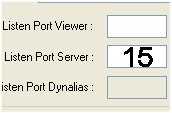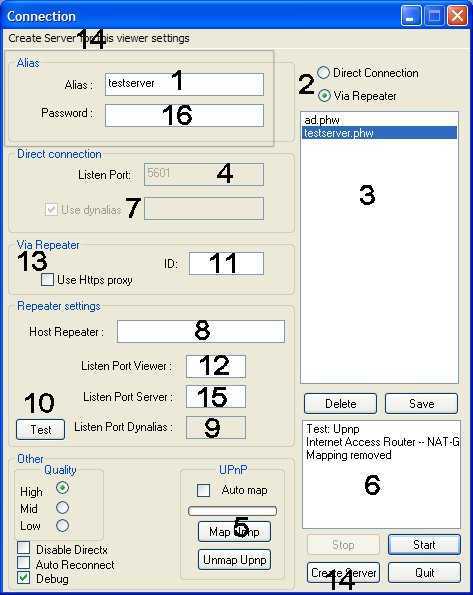PcHelpware Manual - Part 3
Sections of Manual
Part 1 | Part 2 | Part 4
You can find a complete Step by Step tutorial
here
For any question regarding PCHelpware you should have a look on the forum
We are currently preparing a new documentation for tech-savvy users
PcHelpware Manual - Part 3
Server
Executable creation
> For each Viewer profile you create you have to create the corresponding Server package
that will be able to connect the this listening Viewer


> Once you have made the Viewer configuration/profile you can create the corresponding server by selecting
the top menu or pressing the button (14)
> In case you selected the repeater option, you also need to enter the port used by the repeater to listen
for new server connections (15)

> The automatic creation of the Server makes the password mandatory so you must enter a password (16)

> The Viewer profiles save the password (encrypted) and the server contains a MD5 hash of this password
> At this stage you have to make two choices:
- Force the user (on server side) to enter the password when he runs the server or make the server automatically use its embedded password hash.
- Force the user to enter the ID or Dynalias or make the server use its embedded ID and Dynalias

> When the Server creation is completed you can find the executable file in the "alias" sub directory
For the alias "test server" it gives this:

> When you run the Server executable , it displays a window like this

If you choose to embed the password and/or login (ID, dynalias)
the corresponding entry fields are grayed
Summary view of Server executable creation

(1) Alias, use for saving profiles
(2) Switch: direct, repeater
(3) List of existing profiles
(4) Port used by the viewer (listening port)
(5) UPnP
(6) General log window
(7) Dynalias name
(8) Host name repeater
(9) Port dynalias service repeater (5912)
(10) The test button allow to test the repeater (server/viewer/dynalias port)
(11) ID number between 1-9999 to identify this connection
(12) Repeater port use to listen to new viewer connections
(13) Use https proxy
(14) Create server
(15) Repeater port used to listen to server
(16) Password